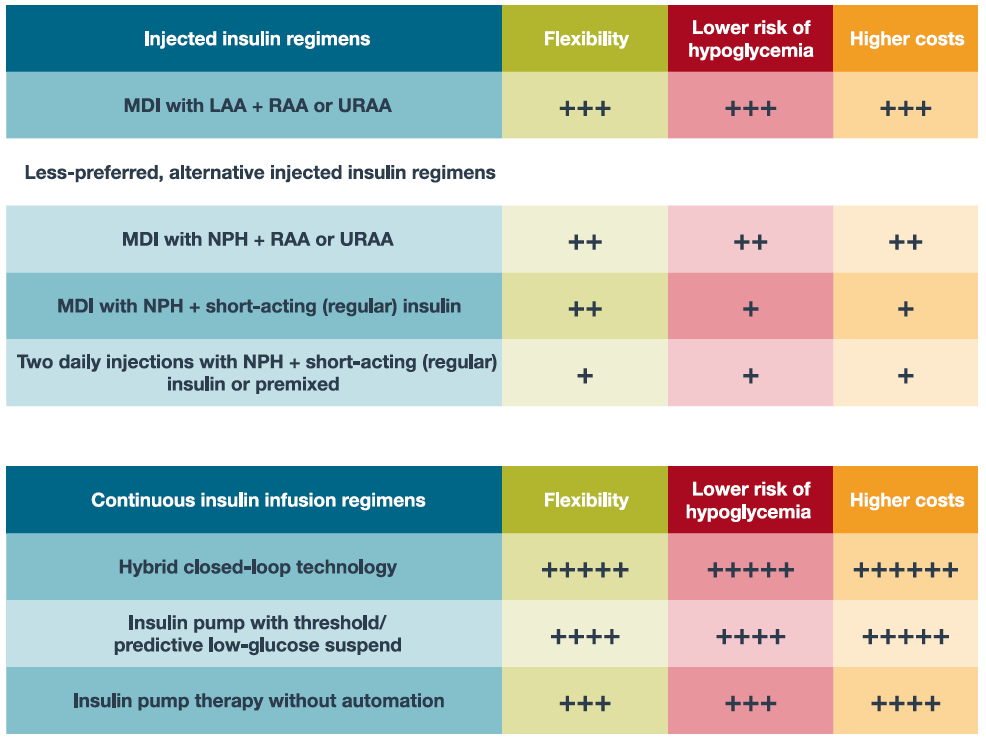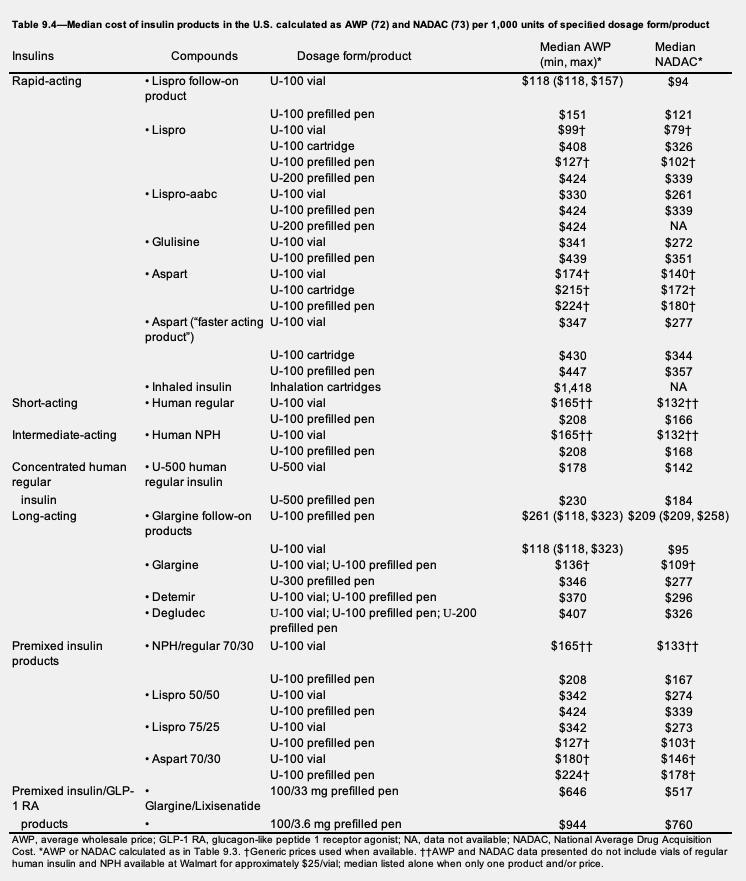T1D
STRENGTHS & LIMITATIONSSTRENGTHS
Subheadline spaceLIMITATIONS
Subheadline spaceEVIDENCE SUPPORTING
multiple daily injections of insulinor continuous subcutaneous administration through an insulin pump, as providingthe best combination of effectiveness and safety for people with type 1 diabetes.9.1 Most individuals with type 1 diabetes should be treated with multiple daily injections of prandial and basal insulin, or continuous subcutaneous insulin infusion. A
9.2 Most individuals with type 1 diabetes should use rapid-acting insulin analogs to reduce hypoglycemia risk. A
9.3 Individuals with type 1 diabetes should receive education on how to match mealtime insulin doses to carbohydrate intake, fat and protein content, and anticipated physical activity. B

Figure 9.1
Insulin Regimens
Managing Insulin
Insulin RegimensImpact on Daily Life
- Continuous glucose monitoring (CGM) systems help manage diabetes better than just checking blood sugar levels with a finger-stick. This is true whether insulin is given by shots or through an infusion pump.
- Inhaled insulin for mealtime sugar control instead of injecting rapid-acting insulin. Afrezza.
- Insulin regimens can vary
- Flexibility
- Risk of causing low blood sugar (hypoglycemia)
- Cost
- The types of insulin include long-acting (LAA), multiple daily injections (MDI), rapid-acting (RAA), and ultra-rapid-acting (URAA) insulin. Each type has its benefits and considerations.
TABLE 9.4 Median cost of insulin products in the U.S. calculated as AWP (72) and NADAC (73) per 1,000 units of specified dosage form/product
PROVIDERS
- 1DRUG SELECTION Aids in choosing suitable noninsulin glucose-lowering agents by efficacy and patient needs.
- 2COST AWARENESS Highlights medication costs (AWP and NADAC) for affordable prescriptions.
- 3DOSING INFORMATION Provides maximum daily dose information for accurate dosing.
- 4MEDICATION MANAGEMENT Supports managing medication by understanding cost and dosing variances.

PATIENTS
- 1COST CONSIDERATION Offers insights into medication costs for financial planning.
- 2TREATMENT ADHERENCE Encourages adherence through awareness of cost and dosing.
- 3INFORMED DECISIONS Enables discussions on effective and affordable treatments.
- 4MEDICATION AWARENESS Increases knowledge of diabetes medication options and dosages.
Simplified overview of indications for β-cell replacement therapy in people with Type 1 Diabetes

